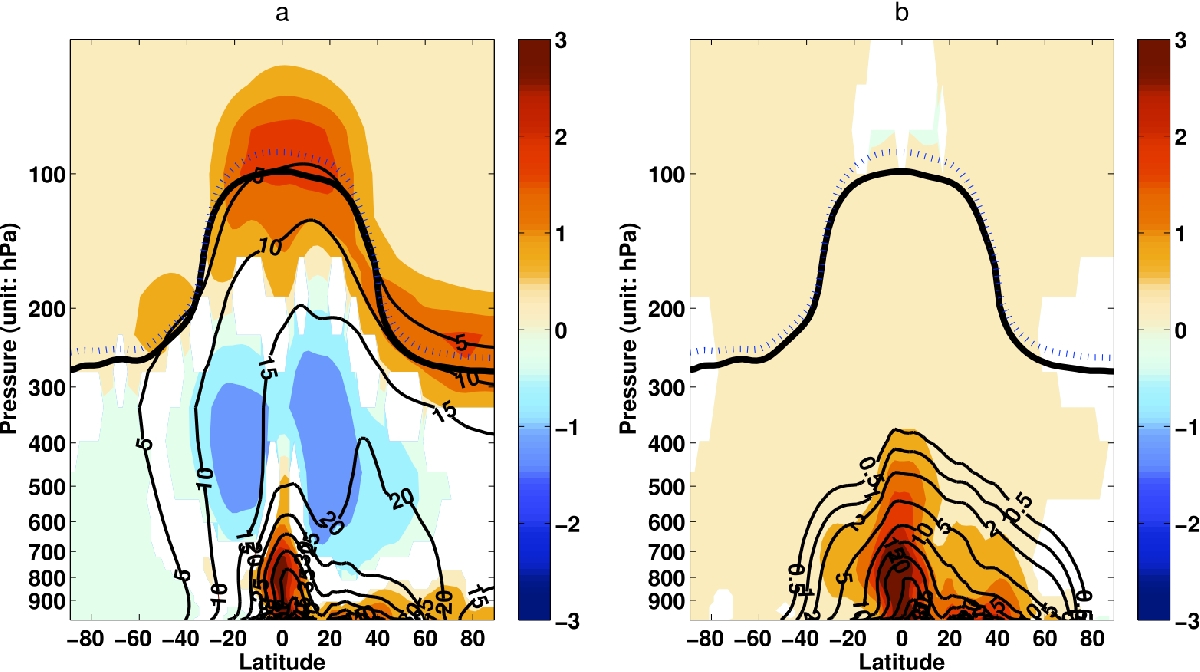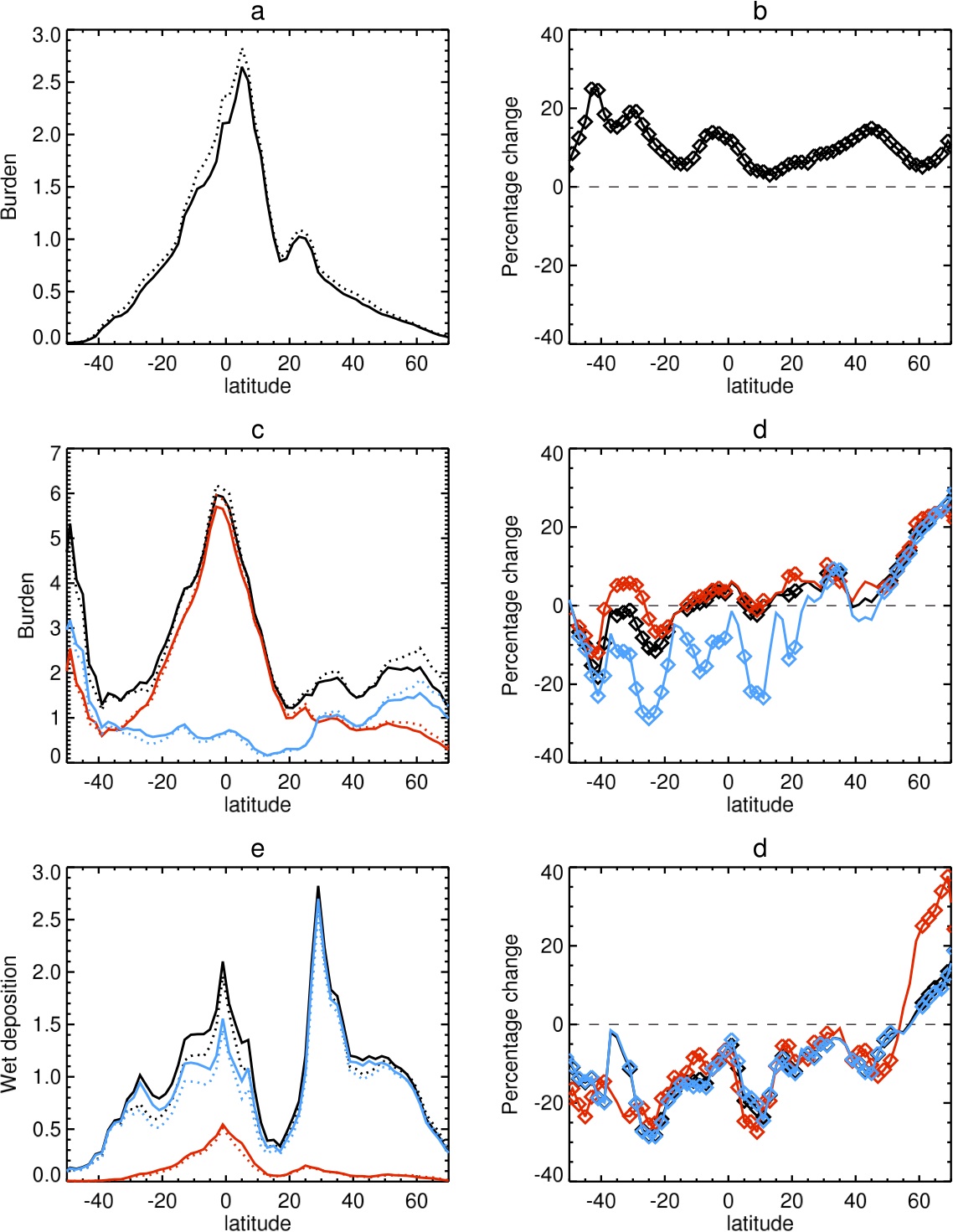July 2011 : Fang et al., 2011
Study by Yuanyuan Fang and co-authors on the impacts of changing transport and precipitation on pollutant distributions in a future climate
In order to isolate the responses of air pollutant transport and wet removal to a warming climate, we examine a carbon monoxide (CO)?like tracer (COt) and a soluble version (SAt), in simulations with GFDL AM3 for present (1981-2000) and future (2081-2100) climates. We find: 1) projected reductions in lower tropospheric ventilation and wet deposition exacerbate surface air pollution; 2) soluble tracer increases despite the higher precipitation globally; 3) as large-scale precipitation dominates wet removal in AM3, its reductions over polluted regions and during polluted seasons contribute to higher soluble tracer abundance globally in the future.
We first examine the changes in zonal mean COt and SAt distributions from present-day to the future (Figure 1). Due to weaker lower tropospheric ventilation, COt exhibits a vertical redistribution with higher/lower concentrations in the lower/upper troposphere. The soluble pollutant (SAt), however, shows increased concentrations almost everywhere. As the only difference between SAt and COt is that SAt has additional wet removal process.Therefore, this comparison indicates that despite higher global precipitation, the soluble pollutant becomes more abundant in the future.

Figure 1 caption: The 20 year average zonal mean distribution of idealized tracer (unit: ppbv) during 1981?2000 (black solid contour) and the changes of that tracer from 1981?2000 to 2081?2100 (color shaded) with respect to vertical coordinates of pressure. (a) COt tracer and (b) SAt tracer. Blue dashed and dotted lines show the tropopause location during 1981?2000 and 2081?2100, respectively (as identified by Reichler et al.[2003], based on the World Meteorological Organization (WMO) lapse-rate criterion); only changes significant at the 95% confidence level assessed by t test are shown.
We examine the impacts of changing precipitation on SAt wet deposition as a way to understand the SAt burden changes from present day to the future (Figure 2). Large-scale precipitation dominates the total wet deposition in AM3, even over the tropics where convective precipitation is much stronger. The corresponding latitudinal wet deposition change follows that of the large-scale precipitation change in most latitudinal bands with a correlation coefficient above 0.9 and a root mean square difference of around 8%. This implies that the latitudinal variability of the change in the large-scale precipitation can largely explain that of SAt wet deposition in a future climate.

Figure 2 caption: The 20 year annual mean latitudinal distribution of SAt burden (a) precipitation (units are 10?5 kg/m2); (c) and wet deposition (units are mm/d); and (e) over land (units are 10?10 kg/m2/d): total, large-scale, and convective precipitation/wet deposition shown in black, blue, and red, respectively; solid lines and dashed lines represent 1981?2000 and 2081?2100 cases, respectively. The percentage change by 2081?2100 of the 20 year mean (b) SAt burden, (d) precipitation, and (f) SAt wet deposition calculated over each latitudinal band, as future latitudinal mean minors present-day latitudinal mean, then divided by present-day latitudinal mean. Diamonds on each line represent the signals significant at the 95% confidence level, assuming that these annual data are independent.
For more information: Fang, Y, Arlene M Fiore, Larry Horowitz, Anand Gnanadesikan, Isaac Held, G Chen, Gabriel A Vecchi, and Hiram Levy II, September 2011: The impacts of changing transport and precipitation on pollutant distributions in a future climate. Journal of Geophysical Research, 116, D18303, DOI:10.1029/2011JD015642.


